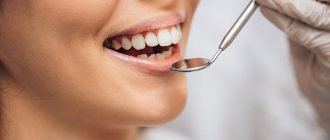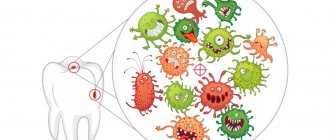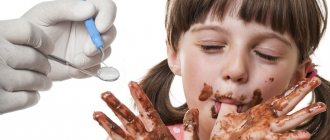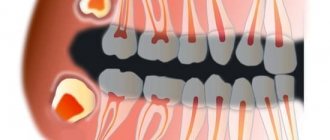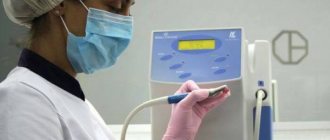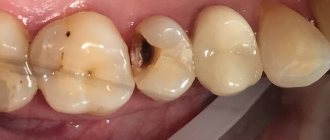For many years, dental treatment was accompanied by pain or discomfort. All this contributed to the development of a great fear of going to the dental office. People have become so afraid of doctors that they are ready to risk their health by testing dubious traditional methods on themselves just to avoid going to an appointment.
Pain and discomfort can be completely eliminated with the help of anesthesia; it is usually used when pain cannot be tolerated. But the injection or drip itself is not very pleasant, and it takes a long time to recover from anesthesia.
Therefore, local anesthesia has become the most common method of relieving pain during a session. The method of pain relief and the drug itself are constantly being improved, and this allows dentists to keep control over the patient’s sensation and condition and select an effective remedy individually for each person.
What determines the level of pain during dental treatment?
If the word “treatment” means not only the common procedure of filling teeth, then not all doctor’s manipulations in the oral cavity cause pain. For example, here is a list of completely painless procedures:
- Treatment of shallow caries.
- Whitening tooth enamel.
- Professional teeth cleaning with AirFlow.
- Deep fluoridation of teeth.
- Fissure sealing.
Most of the above procedures are preventive. Thus, it becomes clear that if you visit the dentist solely to prevent disease, there will be no need for painful procedures.
In other cases, the appearance and degree of pain will depend on the following factors:
- Individual sensitivity and pain threshold of the patient.
- The degree of tooth damage.
- The presence of inflammation, including purulent.
- Individual features of anatomy (location of the nerve ending close to the surface of the tooth, etc.).
- Susceptibility to anesthetic.
- Emotional mood before treatment.
Enamel is the least sensitive, but the more damaged it is, the more susceptible the tooth is to pain. Below the level of the gum, the neck of the tooth does not have enamel, it consists of “cement”; therefore, any dental manipulation in the lower part of the tooth will be accompanied by severe pain.
You should know that without anesthesia it is impossible to cure pulpitis in any form, since the area of its damage consists of nerve and vascular fibers.
Is it possible to have a painless injection?
Most patients, even when performing a simple filling, ask for an anesthetic injection to stop experiencing fear of sudden pain. But such an injection in itself is quite unpleasant. To reduce the pain from an injection, doctors use:
- Special carpule syringes with thin needles.
- Before the injection, the mucous part is dried with a dental hair dryer so that penetration is painless.
- The injection site is treated with anesthetic ointment or gel.
- The medicine is administered very slowly, so after the first dose is administered, the patient will not feel the second.
We recommend that you read
Dental treatment during pregnancy
Treatment of anterior teeth
Dental filling
Canal filling
Types of anesthesia
Methods and painkillers differ significantly in the mechanism of action and the method of administration into the body. The following types of anesthesia are used in the field of therapeutic dentistry:
- Application – involves applying a special gel or spray based on an antiseptic. It is used at the site of an anesthetic injection, removal of dental plaque and when removing baby teeth.
- Infiltration - introducing a dose of anesthetic into the gum tissue by injection. With this injection, the nerve endings are completely blocked. The teeth and adjacent tissues completely lose their sensitivity. Under such anesthesia, it is possible to treat almost any dental disease and even perform minor operations.
- Conduction - this type of anesthesia involves delivering the drug directly to the branch of the trigeminal dental nerve, which blocks the transmission of impulses along the entire length of the nerve. This method is used in areas of dense bone formations of the lower jaw, because it is impossible to administer a direct injection into this area due to the insufficient width of the open mouth. The technique of performing conduction anesthesia is quite complex, and in itself can be painful, but it provides the longest and most lasting effect in the treatment of the lower and upper jaw.
Diagnostics
It is carried out by examination (percussion, probing, determining the mobility of organs), collecting an anamnesis, additional methods of examination:
- radiography
. Allows you to visualize defects of the approximal surfaces, obtain a clear picture of the marginal segments of the alveolar processes of the jaws; - EDI
. Electroodontodiagnosis helps to differentiate the types of disease and determine its complications; - laser fluorescence
. The technology reveals structural changes during demineralization on the occlusal planes; - light fluorescence
. The technique in dentistry is designed for early detection of a lesion, determining its size, depth, and location.
There is no ideal diagnostic technique today; an integrated approach to making a diagnosis is required. A qualified dentist will always suggest that the patient undergo several additional examinations in order to analyze the current situation and prescribe an effective therapeutic regimen for the treatment of caries.
Treatment with laser
The laser has found its use in many industries, but it is especially popular in medicine. Initially, the laser was used for operations as a replacement for a surgical scalpel. Now modern clinics use it for dental treatment. The laser works completely painlessly, and is actively used in the treatment of canals and root cysts, gum problems, and diseases of the mucous membrane.
A typical laser therapy session looks like this:
- The dentist conducts a detailed scan of each tooth for caries, using a laser to identify even damaged areas on the tooth surface that are invisible to the eye.
- The identified problem areas are then treated, with the beam targeting only the caries-affected areas with surgical precision, providing antibacterial cleaning to healthy teeth to prevent accidental infection of a healthy tooth.
- Next, the tooth is washed, treated with an adhesive system and sealed with high quality cement mortar, the composition of which is similar to the composition of a real tooth.
Treatment of dental canals without pain is carried out according to a standard protocol, and a laser beam is used for thorough cleaning of the canals and their antiseptic treatment. Under the action of a dental laser, all liquid instantly evaporates, thus the canals are completely cleaned of pulp, bacteria and other inorganic particles that got on the tooth during the procedure.
Benefits of laser dental treatment:
- Complete absence of pain, discomfort and fear during treatment.
- There is no need to wait until the painkillers take effect.
- The laser treatment procedure is many times faster than treatment with the classical method.
- Gentle treatment of the tooth surface.
- Complete elimination of the possibility of secondary caries
- Prevention of bleeding during treatment in the gingival cavities.
- Complete cleaning of dental canals and no complications
Flaws:
- Only superficial and medium caries can be treated with laser
- High cost of treatment due to the high cost of equipment.
- Physicians must have appropriate qualifications in handling such a device.
Prevention
Aimed at preventing the development of the disease, it is carried out by a set of preventive measures designed to eliminate the unfavorable situation in the oral cavity and increase the resistance of the teeth. You should adjust your daily diet by reducing carbohydrate intake, maintain personal hygiene, promptly remove plaque, stones, and developed orthodontic anomalies - malocclusion, crowding. Regular visits to the dentist will allow timely detection of carious lesions and avoid serious complications.
If there is increased abrasion or bleeding of the gums when brushing teeth, it is necessary to use brushes with soft bristles. It is recommended to use applications with tin fluoride and sodium fluoride (1-2%), fluoride-containing pastes, and use rinses, floss, elixirs, and toothpicks. Timely treatment of caries will help maintain health and get rid of dark spots on the teeth.
Advantages and disadvantages of the procedure
Treatment of caries without an icon drill, according to patients who have experienced this method of eliminating caries, has many advantages:
- Firstly, this is the complete preservation of the healthy part of the tooth.
- Secondly, preventing further tooth destruction and the spread of caries to neighboring ones.
- Thirdly, the complete naturalness of the treated dental unit.
- Absolutely painless.
- Does not require the use of painkillers.
- Treatment in one visit to the dentist.
- Ease of treatment in hard-to-reach places.
Despite the obvious advantages of this method, it is not without some disadvantages:
- Price of treatment icon. Compared to other methods, the cost of the procedure is significantly higher. On average, in Moscow dental clinics you will have to pay about 4,000 rubles for the treatment of one tooth.
- The effectiveness of the method is possible only at the initial stages of caries development.
- If the depth of the lesion is incorrectly determined, a negative result is possible, which will require further treatment using traditional methods.
Complications after general anesthesia
Modern medications and technical equipment are at the highest level in anesthesiology, but there is always a risk of any complications, which patients should know, doctors should take into account and warn. Each human body is individual and, under certain conditions, unpredictable, so it is difficult to give a 100% guarantee of the successful completion of any surgical operation that was accompanied by general anesthesia.
In the practice of anesthesiologists, the following types of complications are encountered, which, in most cases, are noted during the recovery of consciousness after using a drug for anesthesia:
- dizziness, nausea, vomiting;
- psychomotor agitation and confusion;
- severe headache;
- trembling throughout the body;
- muscle pain (back, neck, limbs);
- severe allergic reactions;
- injury to the tongue, lips or teeth (usually characteristic of endotracheal anesthesia);
- infection of the lower respiratory tract, which occurs due to incorrect tracheal intubation;
- fluctuations in basic vital signs (blood pressure, pulse, saturation).
There is also a rate of severe brain damage and mortality, which necessitates the presence of resuscitation equipment and appropriate medications. Informed patients must make their own decision about whether to treat their teeth under general anesthesia , since the doctor cannot guarantee absolute well-being. The best prevention of these excesses is considered to be thorough preparation of the patient, exclusion of contraindications and compliance with all doctor’s recommendations. Modern anesthesia in dentistry reduces the rate of complications to a minimum.
Important! None of these types of anesthesia are used in our clinic, only sedation.
Important! Establishing, licensing and maintaining a full-fledged anesthesiology department requires huge monthly costs.
People usually criticize and dissuade from performing sedation only in those clinics where Rospotrebnadzor issued a refusal and failed to obtain accreditation for this type of licensing.
Complaints about the presence of a carious cavity and pain in sweets
Before
Stage
After
Specialists:
Kosichkina Olga Viktorovna
Patient G., 18 years old, came to our clinic with complaints of the presence of a carious cavity and pain in sweets, during the examination a carious cavity was discovered on tooth 4.6, during treatment under infiltration anesthesia, preparation of tooth 4.6 was carried out, drug treatment of the carious cavity followed by restoration of lost tooth tissue using fissure paints to create a more natural result. Finishing processing.
What determines the choice of filling?
Fillings are divided into temporary and permanent. Temporary fillings are also called diagnostic fillings. They are used to identify symptoms that will define the disease.
If not only the tooth structure is damaged, but also deeper layers, then a temporary filling helps diagnose the disease.
A permanent filling is used for completely different purposes and its quality is significantly different from a temporary one. The purpose of a permanent filling is to hermetically seal the tooth opening and for aesthetic purposes.
Fillings can be made of different materials, depending on the purpose. There are fillings: cement-based, plastic, amalgam, ceramic, etc. The dentist will determine which filling is right for you during a consultation.

